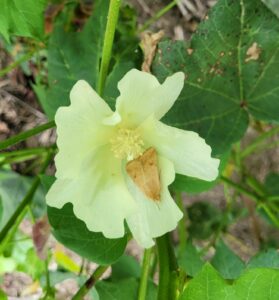As of this week, bollworm trap catches across West TN are beginning to increase and moths are making their way into many cotton fields.

UT’s threshold for dual gene cottons (Bollgard 2) is 20% of plants have eggs present. That is 2 plants out of 10 have at least one egg present. Bollworm resistance to Cry proteins is increasing across much of the Midsouth and the egg threshold doesn’t give dual gene cottons an opportunity to fail. Insecticide timing at this stage is more critical than rate. A 1.4 fl oz/a rate of Vantacor (equivalent to 16.0 fl oz/a Prevathon) or 8.0 fl oz/a rate of Besiege sprayed on egg lay will work as well as higher rates of the same products. However, if live worms (2-3 day old and older) are present in the plant canopy or have bored into bolls or squares the lighter rates of Vantacor, Besiege won’t cut it for control. Chasing worms in the plant canopy with lower rates often doesn’t end well. Vantacor rates of 1.50 fl oz/a or 9 fl oz/a of Besiege or higher will provide better, more consistent control on worms in the canopy.

Triple gene cottons (Bollgard 3, Widestrike 3, Twinlink Plus) have a much more robust insect package that is centered on the Vip3a toxin that does most, if not all, of the heavy lifting in controlling bollworms. The threshold for 3 gene cotton is 4 or more larvae are present per 100 plants or 6% or more fruit injury is occurring. So far, the 3 gene cottons are holding up well in West TN; however, I have experienced break through infestations in triple gene cottons under severe drought stress or fields that are at or near cutout (NAWF <5). Bt expression is often negatively affected by environmental stressors and heavy worm infestations coupled with poorly expressing Bt cotton can equal unexpected damage. We still don’t need to spray on egg lay in triple gene cottons but if worms are surviving past a day or so in 3 gene cotton, an application may be necessary. Diamides (Vantacor, Besiege, Elevest) are still the best options for worm control. Orthene plus a pyrethroid is an option but residual efficacy is limited to 5-7 days and the potential for worms to rebound is a real risk.

